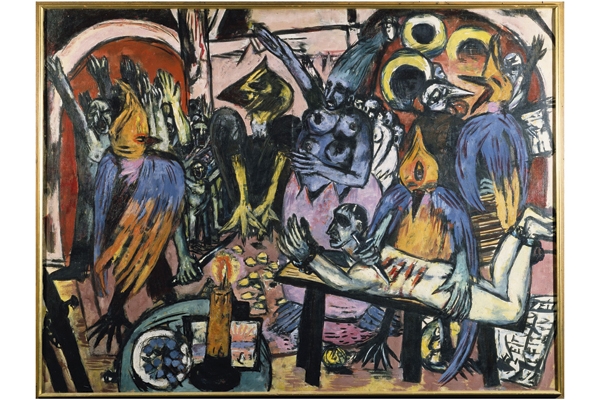Curated by the Louvre as a tribute to mark the 50th anniversary of the Franco–German co-operation treaty signed in January 1963, De l’Allemagne 1800–1939: German thought and painting from Friedrich to Beckmann sounds like a harmless survey of German art. But it is stranger than that, less a measured look at German painting and more a very French attempt to interrogate the German soul, Nietzsche’s writings in hand.
The exhibition opens dramatically with eight 12ft-high canvases by Anselm Kiefer. They were made especially for the show and provide the exhibition’s title, in turn taken from Madame de Staël’s famous book De l’Allemagne. Collaged with dramatic woodcuts and painted inscriptions — ‘Melancholia’, ‘der Rein’, ‘Vater, h. Geist, Sohn, Satan’, ‘Atlantic Wall’ — Kiefer’s portentous, doomy ensemble gets a room to itself. So, too, does Tischbein’s marvellous portrait of ‘Goethe in the Roman Campagna’ showing the great man on leave from the Weimar court, delighting in nature and the antique.
Alarm bells begin to ring in the first section of the show where an introductory storyboard argues for two strains in 19th- and early-20th-century German art and culture, the Apollonian (rational and classical) and the Dionysian (dark, illogical, cruel).








Comments
Join the debate for just $5 for 3 months
Be part of the conversation with other Spectator readers by getting your first three months for $5.
UNLOCK ACCESS Just $5 for 3 monthsAlready a subscriber? Log in